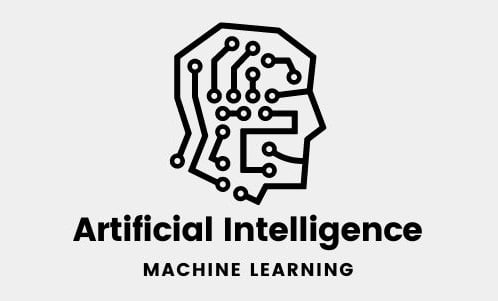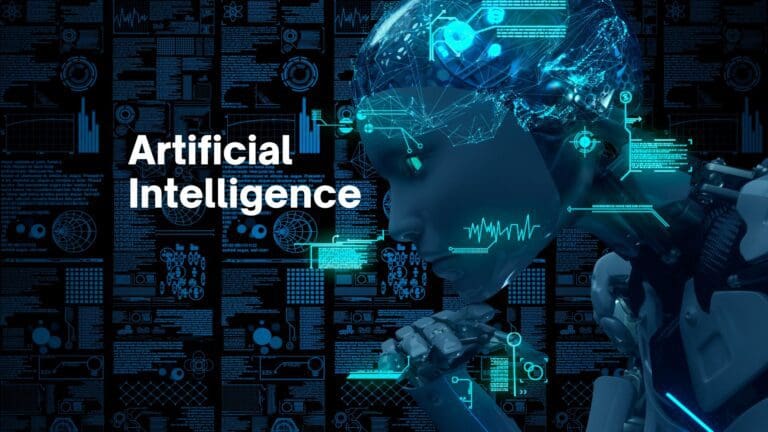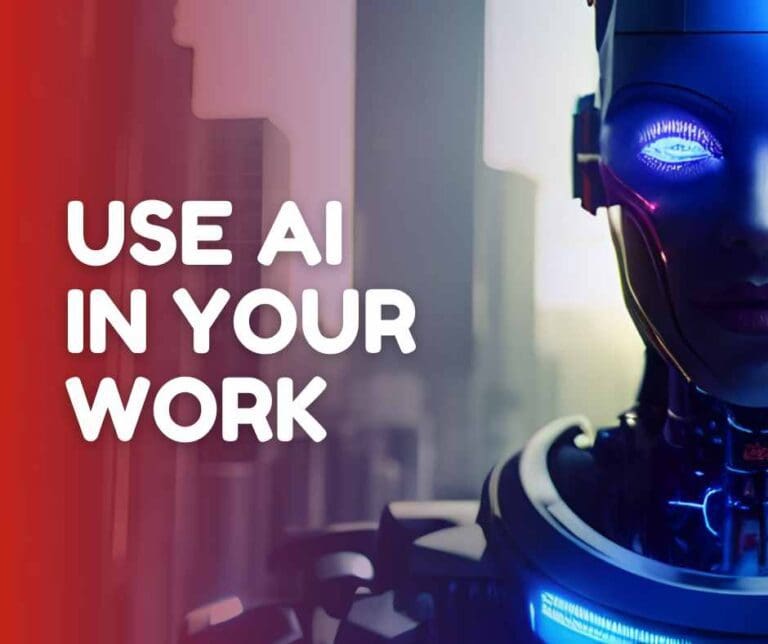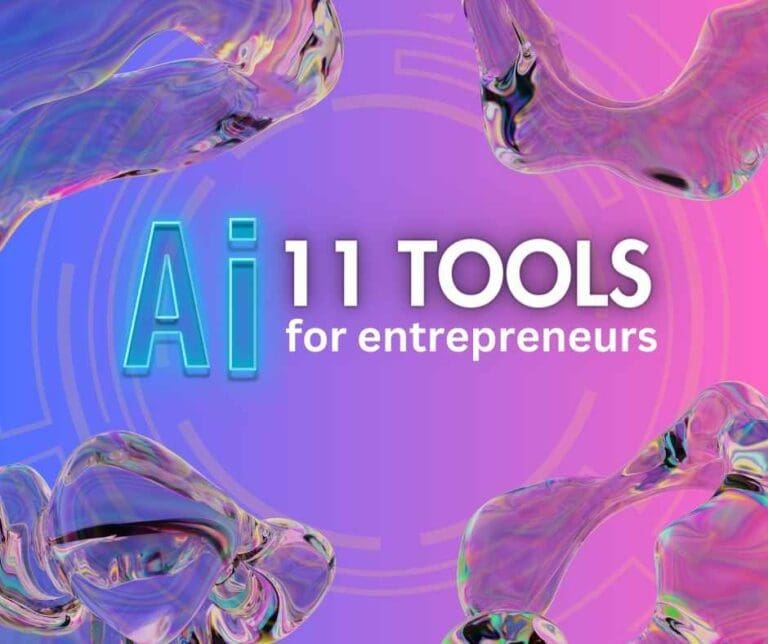The World of Machine Learning in AI
Introduction
Hello, tech enthusiasts, curious minds, and all who dare to dream! Welcome to the world where reality is interwoven with the threads of a not-so-distant future – the world of Artificial Intelligence (AI) and Machine Learning (ML). These aren’t just fancy buzzwords; they’re the keys to unlocking a realm of untapped potential that’s as breathtaking as it is revolutionary.
But let’s dive into a quick story before we set sail. Imagine the year is 1956, and a handful of visionaries gather at Dartmouth College, setting the stage for what would become AI. They believed that “every aspect of learning or any other feature of intelligence can in principle be so precisely described that a machine can be made to simulate it.” Fast forward to today, AI isn’t just a simulation; it’s an extension of our minds, a testament to human ingenuity, touching every corner of our lives.
Fasten your seatbelts as we dive into the cosmos of AI and ML. The journey might be intense, but the discoveries are worth it!
Understanding the Basics
Welcome to the cosmic intersection of AI, Machine Learning, and Deep Learning. Navigating these terms might seem like rocket science, but let’s unravel this together using simple everyday examples and analogies.
When we think about AI, we envision it as a broad science fiction novel, an umbrella term encapsulating all attempts to make machines smart, mimicking human intelligence. Now within this novel, Machine Learning is a pivotal chapter where machines learn from data without explicit programming. Imagine a toddler learning to walk. With each step, the child learns how to balance better and eventually starts running. Machine Learning operates on the same principle – algorithms learning from data and improving their accuracy over time.
One might ask, “What is machine learning in AI?“. Here’s where our analogy becomes handy. If AI is the grand castle of machine intelligence, Machine Learning is its strongest pillar, providing support and making the idea of a ‘thinking machine’ a reality.
But wait, we’ve another term in our AI vocabulary – Deep Learning. Now, what’s that? Let’s get back to our novel. If Machine Learning is a chapter in the AI novel, Deep Learning is like the plot twist. It’s a subset of Machine Learning inspired by the structure of a human brain. Imagine trying to recognize a friend’s face in a crowd. How do you do it? You identify the unique features – eyes, nose, lips, and compare them to your memory. Deep Learning does something similar. It learns to identify patterns in data using artificial neural networks, hence the term ‘deep’.
So, in the grand scheme of things, AI is the castle, Machine Learning is the pillar holding it up, and Deep Learning is the blueprint detailing the pillar’s intricate design. As we journey further, we’ll uncover how these concepts fit together to revolutionize the way we live and work.
The Three Pillars of Machine Learning
As we dive deeper into the cosmos of Machine Learning, we encounter three significant constellations – Supervised Learning, Unsupervised Learning, and Reinforcement Learning. Each of these contributes uniquely to the universe of Machine Learning, much like each star contributes to the brilliance of its constellation. Let’s explore these types of Machine Learning and see how they bring AI to life in our daily experiences.
Supervised Learning
Think of Supervised Learning as teaching a child to recognize shapes. You show the child a square and tell them it’s a square. You do this repeatedly until the child can correctly identify a square amongst other shapes. Similarly, in Supervised Learning, the algorithm is ‘trained’ with labeled data. Let’s say we want an algorithm to recognize cats. We feed it thousands of cat images labeled as ‘cat’. The algorithm learns from this and, eventually, can identify a cat in a new image. Many of your email spam filters work this way, trained to recognize and filter out spammy content.
Unsupervised Learning
Now, consider a toddler playing with a box of assorted Lego blocks. Without any guidance, the child might start grouping them by color or size. This self-organized Learning is the essence of Unsupervised Learning, where algorithms find patterns and classify data without any prior training. Consider how a music streaming platform might suggest new songs. It isn’t explicitly programmed to know your taste. Instead, it learns patterns based on the songs you listen to and suggests similar ones.
Reinforcement Learning
For this, picture training a dog to catch a Frisbee. You throw the Frisbee, and when your dog catches it, you reward it with a treat. The dog learns from this positive reinforcement and gets better at catching the Frisbee. Reinforcement Learning works similarly. The algorithm, or ‘agent’, interacts with an environment to perform certain actions. It receives rewards or penalties and learns to make better decisions over time. This is how AI systems master games like Chess and Go, adjusting their strategy with every move to maximize rewards.
As we delve into the exciting applications of AI and ML, remember these three pillars. They underpin everything from your Netflix recommendations (yes, that’s why you can’t stop binge-watching) to self-driving cars navigating city streets. By understanding them, you are not just a passenger but a co-pilot on this AI voyage.
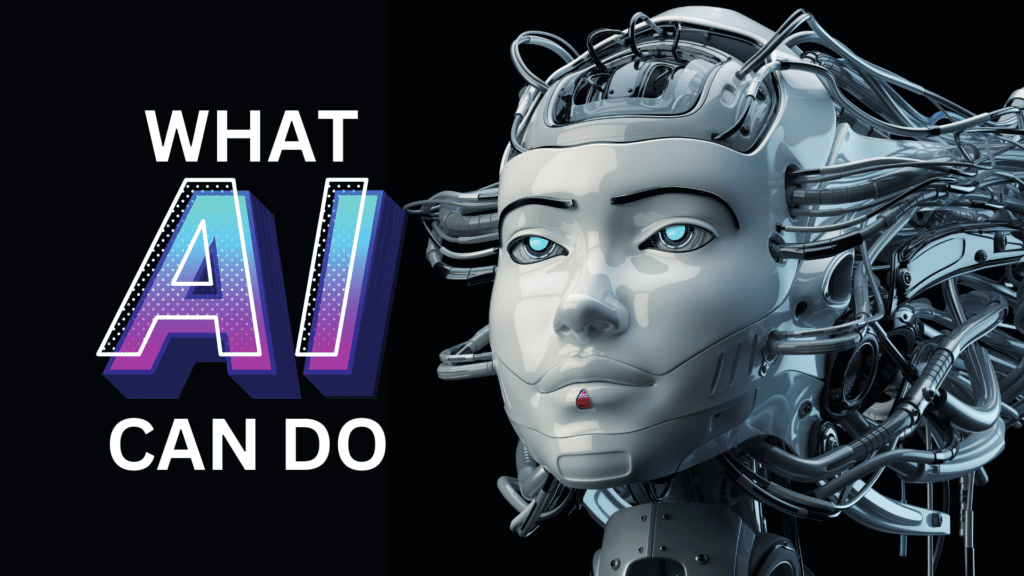
Deep Dive into AI Deep Learning
Ever wondered how Google’s voice assistant can understand your voice or how Facebook recognizes your friends in photos? Welcome to the world of AI Deep Learning, the wizardry behind these marvels.
Remember our AI novel? Deep Learning is the plot twist and unexpected turn that fascinates the story. “What is AI deep learning?” you might ask. Imagine trying to teach a child to recognize a cat. You’d tell them about the cat’s features, whiskers, fur, tail, and how it meows. Over time, the child learns to recognize a cat by these features. Deep Learning, a subset of Machine Learning, does something similar. It uses algorithms called neural networks to recognize patterns in data just as our brain recognizes patterns in the world around us.
These neural networks are a layered architecture of algorithms, hence the term ‘deep’. Each layer picks up different features. In an image recognition task, the first layer might recognize edges; the second might recognize shapes formed by these edges; the next might recognize textures, and so forth. This layered approach enables Deep Learning to handle complex tasks like voice recognition, image recognition, and even natural language processing.
Remember how our brain figures out a friend’s face in a crowd? It focuses on distinct features like their eyes, nose, and lips. Deep Learning does the same. It distinguishes the most important features from a heap of data and uses them to draw intelligent conclusions.
But why does this matter to you? Well, every time you ask Siri a question, or when Netflix recommends a new show based on your viewing history, or even when your email filters out spam, you have Deep Learning to thank. It’s not just about AI recognizing a cat in a picture. It’s about creating smarter applications that make our lives easier and more fun.
So next time you enjoy that movie Netflix recommended, or when Siri gives you the perfect restaurant suggestion, remember the magic of Deep Learning. It’s a smart toddler that’s constantly learning, evolving, and making our tech world more human-like.
AI vs. Machine Learning: The Showdown
Ladies and gentlemen, we are about to witness an epic showdown, a clash of titans in the tech arena: AI vs. Machine Learning! Grab your popcorn, sit back, and relax, because this is going to be enlightening and entertaining.
In the blue corner, we have Artificial Intelligence (AI), the broad discipline that aims to create machines that exhibit human-like intelligence. AI is the dreamer, envisioning a future where machines can reason, problem-solve, and understand language. AI is the umbrella under which everything else, including Machine Learning, falls. It’s like the “automobile” term that encompasses everything from cars to trucks to motorbikes.
AI is more than just a concept; it’s a part of our everyday life. Think of Siri or Alexa, understanding and responding to your voice commands or GPS, providing you with the best routes based on current traffic and road conditions. All these instances involve machines mimicking human intelligence.
And in the red corner, we have Machine Learning (ML), the driving force behind the modern AI renaissance. ML is the doer. It takes the grand vision of AI and makes it a reality. Machine Learning is not just any subfield of AI; it’s the heart of AI. This champ focuses on the development of algorithms that enable machines to learn from and make decisions based on data. This is what drives practical applications such as email spam filters and Facebook’s friend suggestion algorithm.
Now, to the untrained eye, these two might look similar; they might even look like they’re the same thing. But here’s the clincher, the “What is Machine Learning vs. AI?” question that often crops up. Machine Learning is a part of AI. All Machine Learning is AI, but not all AI is Machine Learning. It’s like how all poodles are dogs, but not all dogs are poodles.
So, who wins the match? Well, that’s just it. There’s no winner or loser here. AI and Machine Learning are two sides of the same coin, each indispensable to the other. Together, they make our machines smarter and our lives easier. So, let’s not look at this as a rivalry but as a tag-team partnership where both champs are working together to reshape our world.
The Impact of Machine Learning on Everyday Life
It’s time to bring AI and Machine Learning out of the lab and into the real world. From your social media feed to your refrigerator, Machine Learning has infiltrated almost every aspect of our lives, and it’s transforming them in ways we may not even realize.
One of the first places we’ve seen the footprints of Machine Learning is in our virtual interactions. Ever wondered how Facebook seems to know you so well, presenting you with eerily accurate friend suggestions or showing you advertisements that seem tailored just for you? That’s Machine Learning at work. Algorithms have learned your preferences and patterns through your interactions on the site, allowing for this level of personalization.
And it doesn’t stop at social media. What are AI and ML used for in broader aspects? Consider the vast world of online shopping. Amazon uses Machine Learning to analyze your browsing and purchasing history and that of customers with similar patterns to recommend products you’re likely to be interested in.
Machine Learning is also becoming our personal assistant. Google’s predictive search suggestions? That’s Machine Learning. Your phone predicting the next word in your sentence? Again, Machine Learning. Machine Learning is constantly learning from us, our preferences, our habits, and our needs, making our interactions smoother and more intuitive.
But wait, the magic isn’t just in our screens! AI and Machine Learning are breaking barriers and moving into our physical world. Smart homes are no longer a thing of the future. Our appliances can learn our daily routines, adjust our home’s temperature to our liking, and even order groceries when we’re running low.
Looking at the future, the possibilities seem boundless. From healthcare, where AI and Machine Learning can help predict and prevent diseases, to education, where personalized learning pathways can be developed for each student, the impact of Machine Learning on our everyday life is immense.
But with all these advancements, let’s not forget that there are some things “What can a human do better than Machine Learning?“. We still hold the reigns when it comes to creativity, critical thinking, and emotional understanding. So while Machine Learning is a powerful tool that’s transforming our world, it’s a partner rather than a replacement. Let’s embrace the magic of Machine Learning, using it to augment our capabilities and create a more connected, personalized, and convenient world.
Self-Education in AI and Machine Learning
Hey, we’ve come a long way, haven’t we? From unraveling the mysteries of AI and Machine Learning to diving into their real-world applications, it’s been quite a journey. Now, are you ready to step into the driver’s seat and navigate the world of AI and Machine Learning on your own? Well, buckle up because I’ve got some excellent resources to fuel your journey!
First off, one of the burning questions you might have is: “What to learn first, AI or ML?” I’d say start with Machine Learning, as it forms the backbone of most AI systems today. Once you have a good grasp of ML, you can venture into AI, understanding its broader scopes and applications.
Online platforms like Coursera, Udacity, edX, and Google offer comprehensive courses on AI and Machine Learning, some even designed by the best minds from universities like Stanford and MIT. If you’re interested in getting hands-on, Kaggle is a fantastic platform for practical Machine Learning challenges. Check out this free Introduction to Machine Learning course.
And hey, who knows? Maybe someday you’ll be the one answering the question, “What do you mean by learning in AI?” for an eager new learner. So gear up, future AI whiz; your journey is just beginning!
FAQ Section
Q1: What are AI deep learning and machine learning?
AI, or Artificial Intelligence, is a broad concept that encompasses any activity done by a machine that would require human intelligence. Underneath the umbrella of AI, there’s Machine Learning, which is about giving computers the ability to learn without being explicitly programmed. Deep Learning, on the other hand, is a subset of Machine Learning that deals with neural networks designed to mimic human decision-making. The ‘deep’ in Deep Learning refers to the depth of the network, with some having as many as 150 layers!
Q2: What is machine learning in AI?
In the context of AI, Machine Learning (ML) refers to systems that can learn from experience. Using algorithms, ML enables computers to identify patterns in data, learn from them, and make predictions or decisions without human intervention. For instance, your email service’s spam filter is an example of ML in action!
Q3: What is machine learning?
Machine Learning is about creating and implementing algorithms that enable machines to learn from data and make decisions or predictions. ML includes several techniques like supervised Learning, unsupervised Learning, and reinforcement learning. Each technique has its strengths and is chosen based on the type of problem we need to solve.
Q4: What is AI deep learning?
AI Deep Learning is a branch of Machine Learning that uses neural networks with many layers (hence the ‘deep’ in Deep Learning). These layers enable the system to learn from large amounts of unstructured data. If Machine Learning is a rocket taking us to the moon, Deep Learning is a rocket taking us to the farthest corners of the universe!
Q5: What is AI vs. machine learning?
AI is the grand concept of machines mimicking human intelligence. Machine Learning, on the other hand, is a subset of AI that includes algorithms that enable computers to learn from and act on data. Simply put, all Machine Learning is AI, but not all AI uses Machine Learning.
Q6: What are the 3 types of machine learning?
The three main types of Machine Learning are Supervised Learning (where the model learns from labeled data), Unsupervised Learning (where the model finds structures in unlabeled data), and Reinforcement Learning (where the model learns by interacting with its environment and receiving rewards or punishments).
Conclusion
Congratulations, fellow space explorers! We’ve journeyed through the captivating cosmos of AI and Machine Learning, unraveling their mysteries and witnessing their real-world impact. Let’s take a moment to recap our voyage and ponder the infinite possibilities that lie ahead.
In our quest for knowledge, we began by understanding the basics. We explored how AI, Machine Learning, and Deep Learning intertwine, with Machine Learning serving as the backbone of modern AI. We witnessed the three pillars of Machine Learning – Supervised, Unsupervised, and Reinforcement Learning – and how they power intelligent systems.
We then stepped into the ring for the AI vs. Machine Learning showdown, realizing that these two champions work hand in hand, shaping our world with their combined strength. We marveled at the impact of Machine Learning in our daily lives, from personalized recommendations to smart homes, witnessing its transformative power.
But this is just the beginning. AI and Machine Learning are the engines propelling us toward a future where healthcare is revolutionized, education is personalized, and our lives are enriched. The opportunities are vast, and it’s up to us to seize them.
So, dear readers, I invite you to continue this adventure. Dive deeper into the realms of AI and Machine Learning. Explore the resources mentioned, take courses, and unlock new horizons. Stay curious, for the future is brimming with excitement and untapped potential.
As we bid adieu, remember that you are not mere spectators but active participants in this revolution. Embrace the power of AI and Machine Learning, for they have the potential to change the very fabric of our existence.
Let’s shape a future where machines and humans coexist harmoniously, creating a world where possibilities are limitless.
Keep exploring, keep learning, and stay tuned for more captivating insights on our journey through the cosmos of AI and Machine Learning. Until then, adieu, fellow adventurers!
Fun AI Fact
Did you know that AI has a great sense of humor? Well, maybe not quite yet, but researchers have been teaching AI systems to generate jokes. While they might not always hit the mark, here’s a lighthearted one for you:
Why did the robot go on a diet? Because it had too many bytes!
Remember, AI is not just about serious algorithms and mind-boggling concepts; it can also bring a smile to your face. Keep exploring our blog for more fascinating AI facts, captivating insights, and perhaps even a few more jokes to brighten your day!

